Tag: World War Two
Project Proposal
At the core of my research is the story of my grandparents’ experiences during World War Two with specific emphasis placed on their time spent in the Gulag and the aftermath of this tenure.
My grandfather’s name was Zdzisław Lapot and he was born in Warsaw, Poland, on March 5, 1915. At 13, his entire family moved to Lwów, where his father set up a crystal factory and the young Zdzisław began apprenticing in the family trade. He later trained as a fighter pilot before the outbreak of the war.
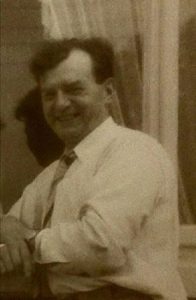
My grandmother was born Antonina Jacek on September 12, 1916 in Ternopil, close to her family town of Lwów. The couple met at a dance in Lwów in 1935. They were a social and well-liked couple and were known to sing their trademark song together at parties. They married the day after Christmas in 1938 in the Roman Catholic church of St. Mary Magdalen in Lwów, Poland.
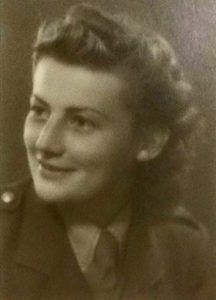
World War Two broke out on September 1, 1939, and Zdzisław was mobilised to fight with the Polish army. Not long after, he was seized for his role and was sentenced by the Soviet Army to imprisonment in the Siberian Labour Camps, the Gulag.
The term Gulag is the acronym for the Soviet Bureaucratic institution, Glavnoe Upravlenie ispravitel’no-trudovykh LAGerei, (Main Administration of Labour Camps) that operated In the Stalin era. Aleksandr Solzhenitsyn published The Gulag Archipelago in 1973, and it was at this time that the term Gulag came to represent this vast concentration camp system.
September of 1939 was a turbulent time across Europe, and Lwów was certainly not spared. The Soviet and Nazi forces divided Poland and Lwów found itself absorbed into the Ukrainian Soviet Socialist Republic. Large numbers of Jews and Poles were deported east into Siberia. Antonina was amongst them. The deportees endured long train journeys. Cramped cattle trucks were fitted out with wooden shelves or bunks and troops packed in as many people as possible. There were sometimes up to seventy people in one trunk, with little or no amenities, for several weeks at a time. The destinations of these trains were some of the most inhospitable parts of Siberia.
At its height, the Gulag consisted of hundreds of camps, each holding 2,000 to 10,000 prisoners. Inmates worked in mines, lumber production and in railway and canal construction. Mining and logging were the most common, and the harshest, activities, and it was in one of these camps that Zdzisław spent almost three years. He endured twenty hour days, cutting down trees in up to five feet of snow, which then had to be hauled tens of miles back to base camp. The men wore mere issued overalls. In particularly harsh conditions, the only concession they were granted was access to petroleum jelly which they were permitted to smear on their faces. Many prisoners lost fingers, toes and limbs to frostbite. Escape was futile. My grandfather recalled to us over the years instances of friends attempting to do so, only in some cases to return to their prisons voluntarily, others did not survive the return at all. Zdzisław and his fellow inmates regularly picked frozen leaves from the trees and smuggled them into camp at night to concoct a soup with the melted snow. Fatality rates ran as high as 80%
Meanwhile, Antonina had been sent to what was termed an ‘Open Village’ where security was not as stringent, but the remoteness and harshness of the environment ensured a natural barrier to escape. She reported on parole, weekly, for a nonexistent crime. Her task was the making of cement blocks with her bare hands. She recalls this work being performed to the tunes of an accordionist who would play on a raised platform above where they worked. Hard labour was payable with scant food supplies and sub-human living conditions. Very few people survived these camps for longer than two years.
Following Operation Barbarossa, the USSR faced its own former ally, Germany, and in July, 1941 signed a treaty with Poland that saw amnesty being granted to the Polish people. Two large scale evacuations took place from March to August 1942, and Zdzisław and Antonina were both released from their respective camps, each still not knowing the fate of each other, or that of their families.
A substantial amount of Polish were sent to Tehran and Antonina was amongst them. She underwent health rehabilitation, trained as a nurse and was sent to Egypt to practice her new skills. Zdzisław was sent for medical treatment in Italy for the ordeals he had endured in the camps, the marks of which he bore with him his entire life. Upon recovery, he underwent intensive training for battle.
At this time, the Red Cross were compiling names from the evacuated Soviet Camps. Zdzisław, having had no news from his wife or family for over three years, heard through the Polish community that his sister’s name had been tracked to a camp in Egypt, and he travelled there to reunite with her. Mass exodus and confusion had led to inaccurate records of names. In bittersweet circumstance, he found not his sister in Egypt, but Antonina.
Together, they travelled with the Allied Forces throughout the Middle East. They were both present at the Battle of Monte Cassino where Zdzisław fought at the mountain and Antonina worked at base camp as a nurse. Harsh conditions saw the couple lose their first child at the base of the mountain. Zdzisław was later awarded the Monte Cassino medal for bravery for his acts on the battle field. A Polish memorial at the base of the mountain cites Feliks Konarski’s anthem Czerwone maki na Monte Cassino (The Red Poppies on Monte Cassino) in tribute to the Polish contribution:
Red poppies on Monte Cassino, | Czerwone maki na Monte Cassino
Instead of dew, drank Polish blood. | Zamiast rosy piły polską krew…
As the soldier crushed them in falling,| Po tych makach szedł żołnierz i ginął,
For the anger was more potent than death.| Lecz od śmierci silniejszy był gniew!
Years will pass and ages will roll, | Przejdą lata i wieki przeminą,
But traces of bygone days will stay, | Pozostaną ślady dawnych dni!..
And the poppies on Monte Cassino | I tylko maki na Monte Cassino
Will be redder having quaffed Polish blood. |Czerwieńsze będą, bo z polskiej wzrosną krwi.
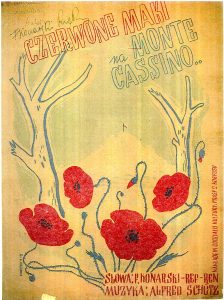
By 1945 over 200,000 Polish troops of the Polish armed forces in the West were serving under the high command of the British army. Many of these men and women were originally from cities in Eastern Poland including Lwów. The Polish Resettlement Act of 1947 offered British citizenship to displaced Polish troops. It was the first ever mass immigration legislation of the Parliament of the United Kingdom. It offered citizenship to over 200,000 displaced Poles and enabled Poles who could not resettle on their native soil for a number of reasons the opportunity to settle in Britain and provide labour.
The couple made the move to London, and from there followed a job lead to Ireland, where Zdzisław found himself in the role of designer and production manager at Waterford Crystal, once again practicing the trade of his family. It was at this time he designed, amongst many other works, the renowned Crystal Swan series.
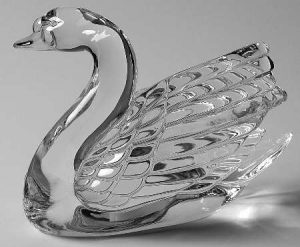
I feel the reason why I wish to embark on this research is evident. These are narratives that have fallen through the cracks of time and are at a very real risk of disappearing entirely. My grandparent’s story is a small body of delicate history and my aim is to expand it for those who knew my grandparents while they were still with us but were not aware of the intricacies and details of their lives and to also preserve it for future generations. There is a definite sense of regret in my family that we did not explore the story more while they were still with us and with this project I would like to go a little way towards rectifying this .
My research will be divided into a few different areas. My family have relatives remaining in Lublin that we have sadly fallen out of contact with. It is believed that Antonina’s brother returned to Poland post-War and became an actor, while her sister migrated to Canada. To this end, there is a dusty box of correspondence in an attic that must be explored and I am hoping it will produce a solid lead. In Dr. Mike Cosgrave’s Teaching and Learning in Digital Humanities module, I am formulating a class on family tree research and it is my aim that this will aid me in this particular aspect of my research.
I possess a cautious sense that the ideal of building my research 100% around the experiences of my grandparents may be a little ambitious given the information I have to work with, and I am hoping this will change. However, on a broader level, it is my aim to discover which camps and villages were more specific to the conditions they endured and build a narrative around these.
I have compiled a catalogue of readings that recount personal experiences of Poles who were in similar situations. I also hope to source other interviewees willing to speak of their family’s stories in regards to the camps and aftermath. I expect social media and some specific online forums to prove particularly useful in this respect. I am also particularly interested in interviewing Lyudmila Sadovnikova of the Gulag History Museum in Moscow and gaining insight from her perspective on the unique experiences of Poles at the time and also possibly garnering some directives from her expert knowledge.
I recently read Anne Applebaum’s Gulag, a non-fiction book which offers an overview of the Soviet Gulag system and explores human experience within its vast history. In Gulag, Applebaum describes part of her methodology as working with the fictional texts of Russian writer, journalist and poet Varlam Shalamov, his works being based on real events and personal experiences. I am interested in the intertwining of facts and figures with fictional narratives in the re-presenting of my grandparent’s experiences.
As regards to my digital artefact, I would like to convey memory and evoke a sense of family and inheritance. I believe the best manner in which to do this is through the creation of a website. Through discussion with family and friends, I sense the need for my digital artefact to be inherently accessible for a broad spectrum of users, and not overly complicated. I have a strong aim that its interface be friendly towards the needs of an older generation whose interest in it is palpable.
My grandparent’s story is to be the main focus of the site. I intend to digitize their photos, family and official correspondence, documents and personal belongings. This will introduce a personal tangibility and aura to the artefact. Leading off this main focus shall be subsections; synopses of the history of the Labour Camps, elaborations on daily life for inhabitants of the Open Villages and the camps, and experiences for Poles after their release.
I am playing with the notion of creating a simple story map for insertion to the site, documenting my grandparent’s travels from Poland through Siberia, Italy, the Middle East and London, to their final home in Ireland. I expect the practicalities of this to become more evident as I further explore my options in Tools and Methodologies in Semester Two of the course.
In conclusion, I would like to emphasize that I do not intend my research to be focused on history, the Gulag system or repression. I certainly intend to elaborate on these aspects in order to provide very pertinent context to the story I am telling but overall the aim of my research is to record the losses and recount the triumphs of two resilient people against immense obstacles.
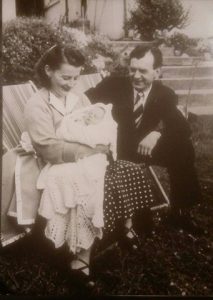
References
Applebaum, Anne. Gulag. Penguin, 2004.
Kizny, Tomasz. Gulag: Life and Death inside the Concentration Camps. Firefly, 2004.
Krupa, Michael. Shallow Graves in Siberia. Birlinn, 2004.
Service, Robert. A History of Twentieth-Century Russia. Penguin, 1997.
Solzhenitsyn, Aleksandr. The Gulag Archipelago. Harper Collins, 2002.
